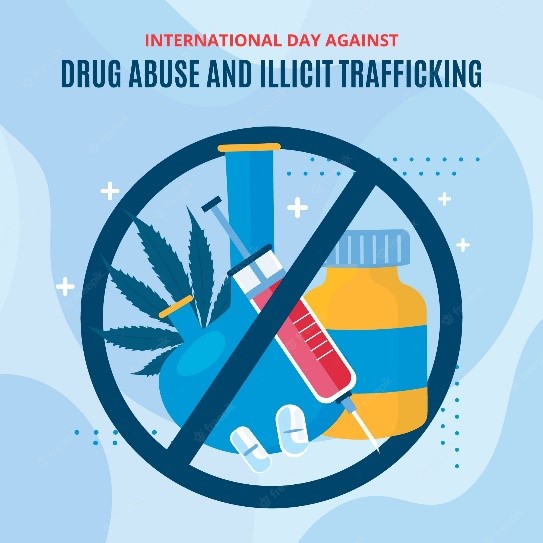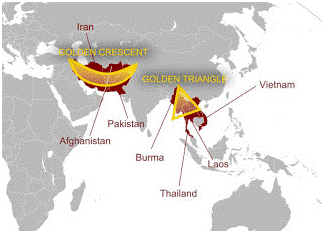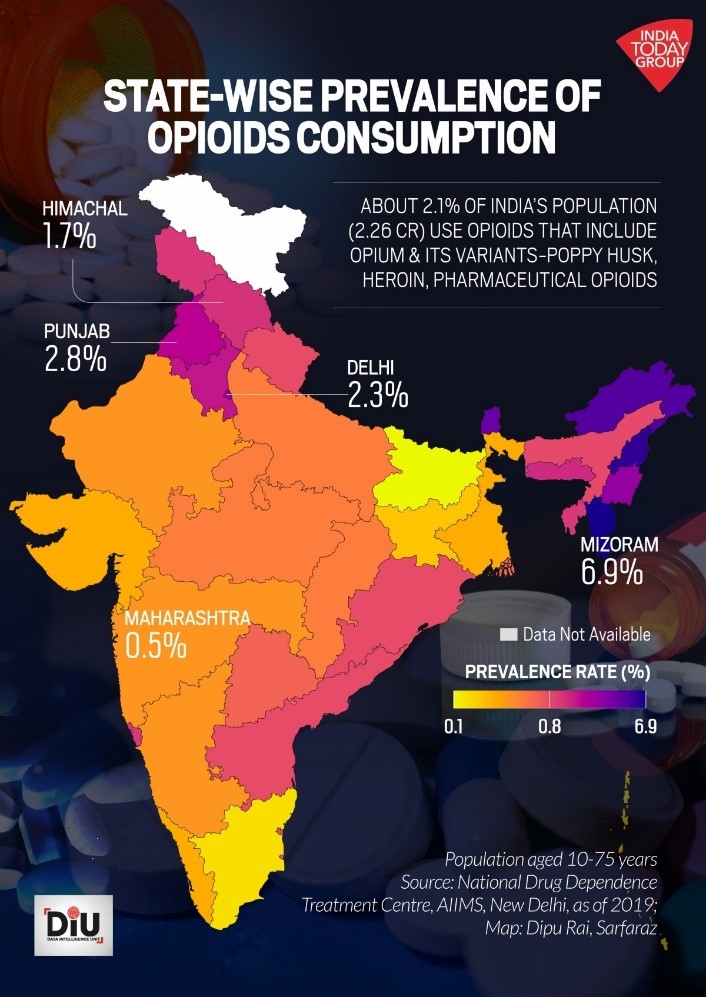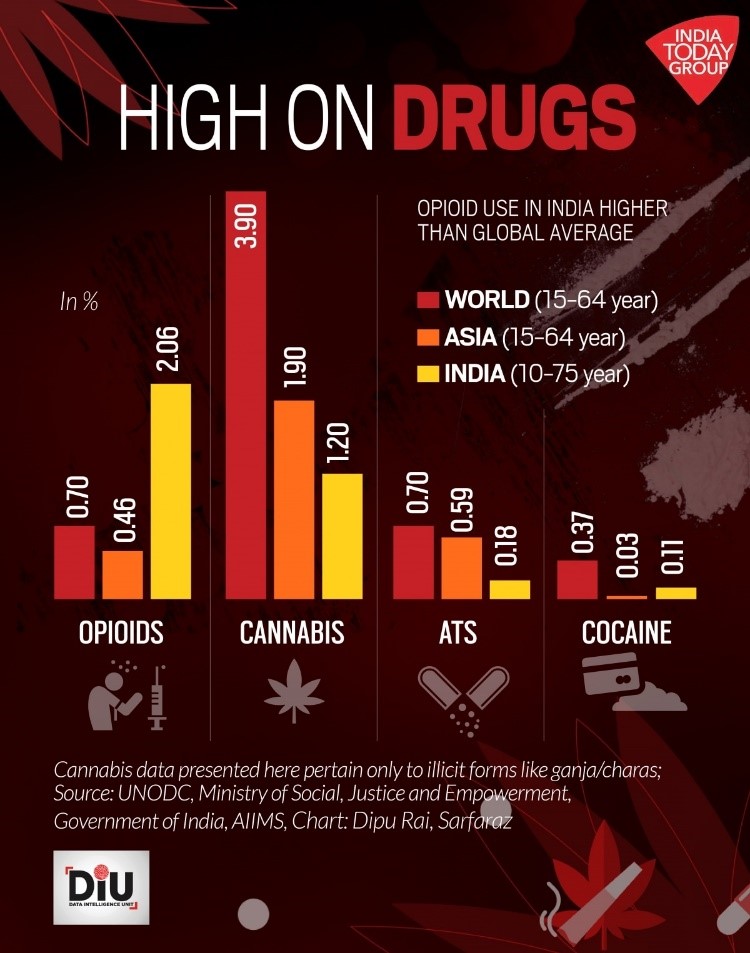





Disclaimer: Copyright infringement not intended.
Context
International Day against Drug Abuse and Illicit Trafficking
About
Genesis
Purpose
History
Aim and Objective
Theme
Significance
|
Examples Of Common Psychoactive Drugs Alcohol Alcohol is a depressant, with ethanol being its primary ingredient. It causes tiredness, impairment in judgment, nausea, and vomiting when taken in large doses. Cannabis Cannabis, popularly called marijuana or weed, is a plant that causes psychoactive changes in the brain when consumed. THC and numerous cannabinoids in the plant result in memory loss and feelings of euphoria. Sensitivity to marijuana changes drastically from person to person, where paranoia, anxiety, depression, and a fast heart rate can occur when one consumes too much. Cocaine Cocaine, derived from the coca plant, is a stimulant that raises dopamine levels in the brain and causes general euphoria. Either short-term or through frequent use, cocaine can cause a host of cardiovascular problems such as cardiac arrest and stroke. Heroin Heroin is a depressant produced by the opium poppy plant. It's usually taken by smoking or injecting into the veins. The drug is physically addictive and can cause changes in the brain that lead to dependence. Heroin users often suffer from heart problems, memory loss, high levels of drowsiness, possible gangrenous effects on the injection site, and a higher risk of STD infection when sharing needles. Hallucinogens Common hallucinogens are LSD, peyote, and mushrooms. There are also dissociative hallucinogens like Ketamine and PCP. Inhalants Inhalants can be either drugs meant to be inhaled or objects that aren't, like aerosols. Solvents are also considered inhalants, the most abused being paint thinners and glues. Nitrous oxide is common for dentistry work but has been illegally sold and abused for its euphoric effects. Prescription Opioids The most common prescription opioids are oxycodone, hydrocodone, codeine, methadone, and fentanyl. Each of these is commonly abused, though the rate of fentanyl overdoses and abuse disorder from the drug has seen a sharp rise in the last decade. Prescription Stimulants Common prescription stimulants are Adderall, Ritalin, and Concerta. They're commonly prescribed for people with behavioral or compulsive disorders, though abuse and dependency on them are common. Methamphetamine Methamphetamine, often shortened to meth, increases the levels of dopamine in the brain and causes euphoria. It causes lasting damage to the mental state of abusers and harms one's cardiovascular health. Psychosis and other neurological problems are common among long-term meth addicts. Tobacco Or Nicotine Tobacco is commonly smoked as cigarettes, in pipes, or chewed. The active drug in tobacco is nicotine, a stimulant that's very addictive and raises the alert level of users. Through either chewing or smoking, tobacco use can lead to respiratory problems and cancers in the mouth. Nicotine is sometimes prescribed to patients who wish to quit smoking as patches. |
Drug abuse in India

Drugs, substance abuse
Fatal Addiction
High on Heroin

Drugs, Types, Users
Consumption Across States

Inhalers
IN A NUTSHELL,
Major findings of Survey by AIIMS at National and State level:
Alcohol
Cannabis
Opioids
Sedatives and Inhalants
Access to treatment Services:
Impact of Drug Abuse on the User
Isolation
Stagnation
Damaged Relationships
Financial Distress
Mental Health Problems
Depression And Anxiety
Provoking Existing Mental Health Conditions
A Criminal Record
Lost Dreams
Death
The Effects of Drug Abuse on Health
Effects of Drug Abuse on The Brain
Effects of Drug Abuse on Behavior
Effects of Drug Abuse on Unborn Babies
The Impact of Drugs on Society
Ill Health
Families
Workplace Issues
Crime
Environmental Damage
The Economic Impact of Addiction
Steps taken by the Government
Challenges
Tackling the Drug Menace: Way Forward
Behavioural Economics Campaign
Support to Drug and Alcohol Addiction Centers
Coordination between Customs and other enforcement agencies
Suitable bye-laws in Society Rules
Capacity enhancement in the Border Areas
Capacity building of Canine Squads
Instill a strong sense of fear
Reduce Stigma
Education Curriculum
Other
Multifaceted Approach
|
PRACTICE QUESTION Q. The Constitution of India directs the state to improve public health and endeavour to bring about the prohibition of the consumption of intoxicating drinks and drugs which are injurious to health. What is the socio-economic impact of Drug Abuse? Elucidate. Shed light on the steps taken by the Government of India to tackle the menace of Drug Abuse. What are the underlying challenges in this fight against Drug Abuse? Suggest measures to overcome those challenges. |









© 2025 iasgyan. All right reserved